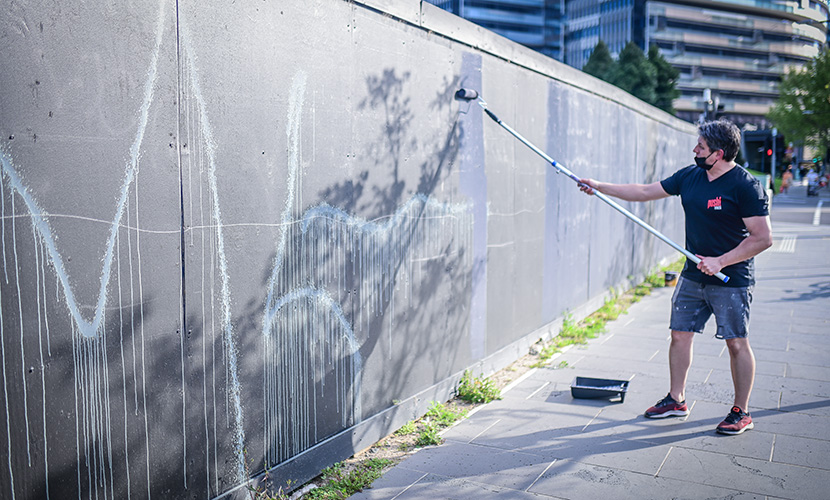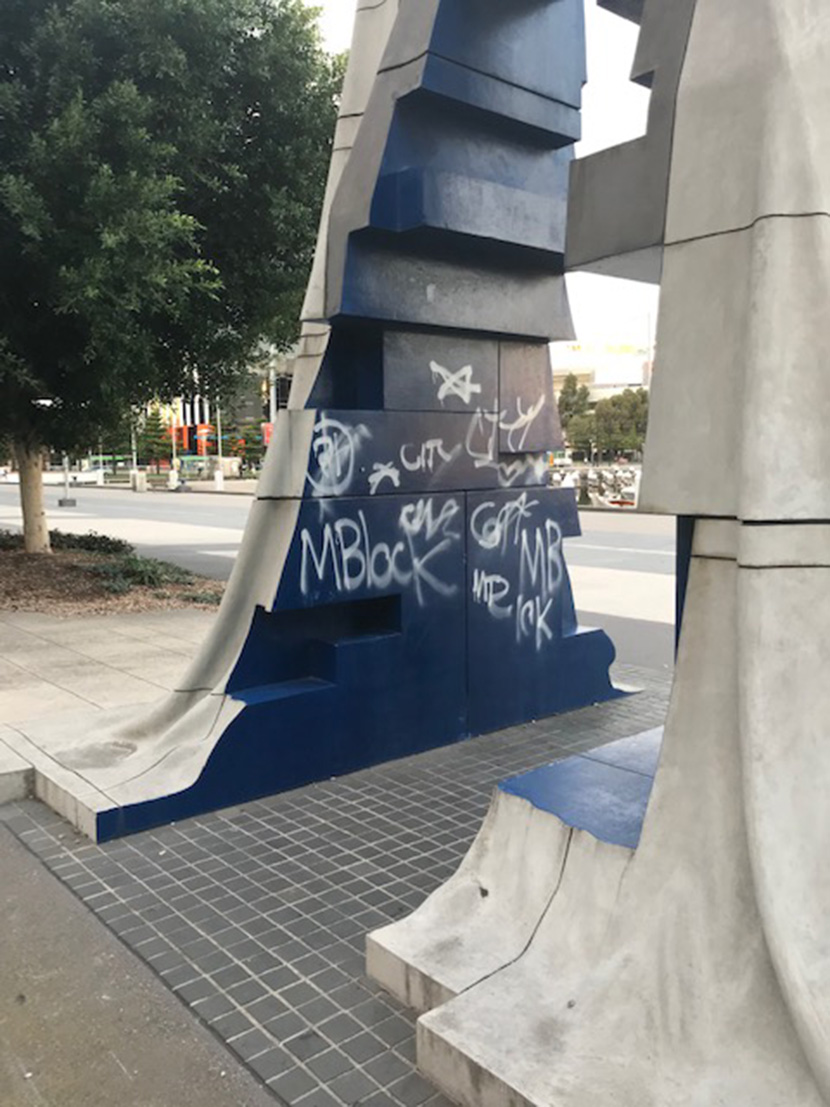The City of Melbourne seeks joint effort to rid the city of graffiti as deterrence reaches critical point
The City of Melbourne has sought the “urgent assistance” of the state government as it battles to fight a 60 per cent increase in graffiti and tagging since the pandemic began.
It comes as the council carried out a graffiti blitz in March which saw clean-up crews target Docklands, South Wharf, the Hoddle Grid, and Southbank areas.
About 14,000 square metres of graffiti was removed – the equivalent of 50 tennis courts – after reports of graffiti almost tripled in volume since the launch of the blitz program.
The average time between graffiti being reported and cleaned was five days, which resulted in more than a 70 per cent reduction in days for completion, compared to January.
According to a council report, “The blitz has had a noticeable impact on graffiti management and the cleanliness of the city.”
However, Lord Mayor Sally Capp conceded, “we don’t have the unlimited resources to just keep cleaning” and successfully moved a motion at council’s April 29 meeting in which she requested the City of Melbourne work with the state government, Victoria Police, and M9 councils (an inner city-advocacy group) in a “coordinated approach to graffiti deterrents.”
“We’re seeing that heightened increase of tagging … we absolutely have to look more broadly and use the data more deeply and efforts to deter and prevent,” she said.
Cr Capp said the joint approach would mean “our city has an opportunity not just to recover, but to literally be a city that can welcome people with its beautiful buildings, beautiful, physical environment that is not impacted in such a negative way by tagging and graffiti.”
The council’s city activation portfolio lead Cr Roshena Campbell said ways to prevent and deter graffiti were critical and “looks at how we can best use the resources we have for cleaning the city.”
“Although we’ve invested heavily in a blitz, it’s not on its own enough,” she said.
The reality is that this is a scourge on our city … I’m gutted every time someone comes back into the city for the first time after the pandemic and they say, ‘it’s dirty, it’s not the Melbourne I knew; I’m not coming back.’
“I’m gutted for the business owners who are working so hard to bring people back in for the workers who want to come back in. They deserve to see a sparkling city, and I know that we’ve invested significant resources to make that happen. But it hasn’t been enough.”
Cr Jamal Hakim, echoed Cr Campbell’s concerns, saying a “review for opportunities for prevention and deterrence is really, really critical.”
“Some of these problems are to do with social problems that we need to work through, whether that’s through youth activity programs, other programs that mean that people have a sense of belonging to their community and a pride in their community,” he said.
A Docklands Representative Group spokesperson said locals were “pretty annoyed” by the ongoing battle with graffiti.
“Not only does it directly cost them in terms of increased insurance premiums and their rates being used to repair damage to public property, these tags are a visible indicator that people who don’t care about Docklands are hanging around,” the spokesperson said.
Long-time business owner Andrew Ward, who operates PUSH! Fitness in Docklands said there appeared to be “more graffiti in the city than when the blitz started.”
“When I drive through the city twice a day, there is the same if not more graffiti. In my opinion, that two-week blitz has been a failure,” he told Docklands News.
Mr Ward, who has spent hours out of his own time painting over graffiti on walls at the corner of Collins St and Harbour Esplanade “multiple times”, said he had not “seen one graffiti crew at all” in Docklands.
“I’m walking past the community garden right now and there’s graffiti,” he said last month, adding Wurundjeri Way was “full of graffiti.”
“If you go and pound the pavement in the city, there’s graffiti everywhere, I don’t know what they’re talking about.”
“It’s a disgrace, there’s been no improvement at all. All they [council] do is deflect some spin.”
Melbourne street art expert Adrian Doyle said the volume of graffiti the council was contending with was “unwinnable”, and that “they need to go to the source and do youth programs.”
“In the end graffiti will always be there, there’s nothing they can do. All they can do is work with and curb these guys [offenders] and give them an understanding of respect,” he said.
“The battle the council is doing is unwinnable – it’s a waste of money and that money should be better spent.”
“When I worked for Signal [a creative studio for young people in the City of Melbourne] I used to go around and meet with the kids doing graffiti or the people doing it and do workshops with them … and these kids are great artists, they’re doing murals.”
“The stance the government is currently taking is not really well thought-out and is not going to help the people doing graffiti.” •

New park to revitalise historic maritime precinct in Docklands





 Download the Latest Edition
Download the Latest Edition